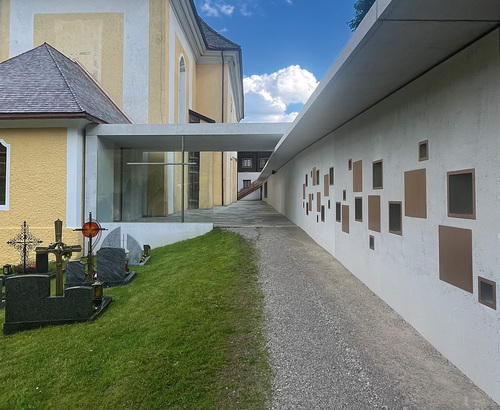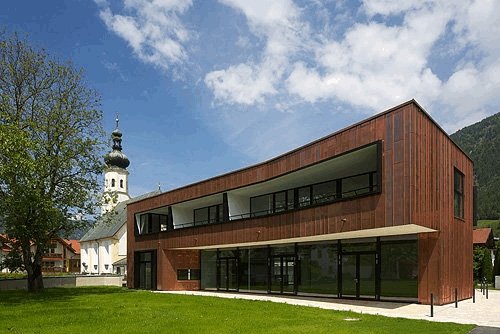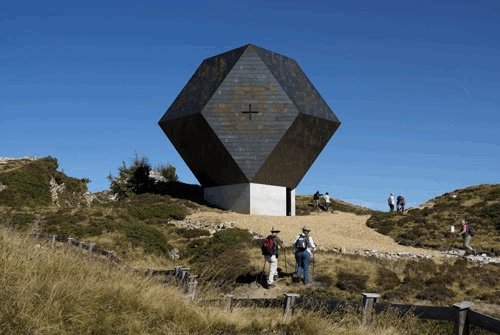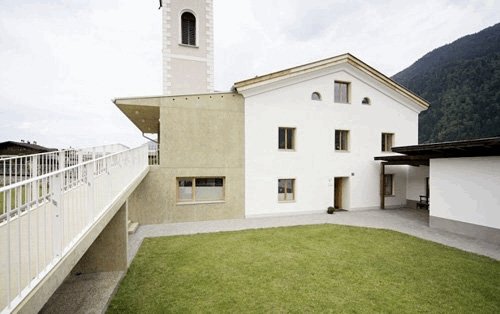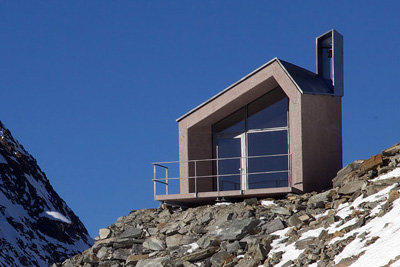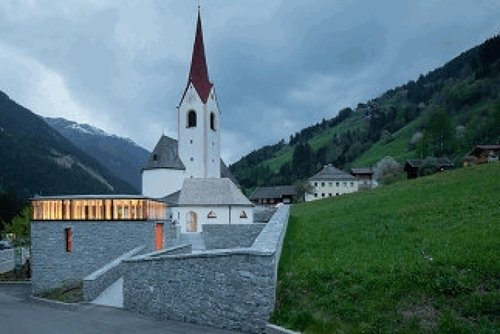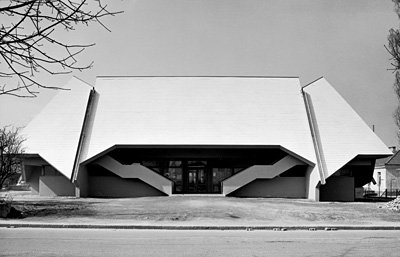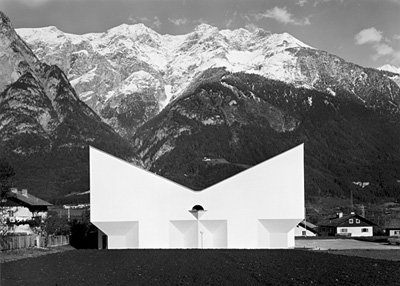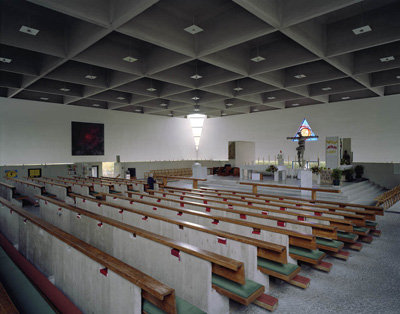Urn cemetery Außervillgraten
Architecture: Peter Paul Rohracher (2023) Builder-owner: Gemeinde Außervillgraten Open to the public: yes In 2024, the extension received a recognition award from the Tyrolean State Prize for New Building.
The cemetery of the church of St. Gertraud, located on a slope above Außervillgraten, was extended to include urns in 2023. A 60-metre long, light-coloured concrete wall with a slightly projecting roof slab was built on the slope in front of the old rubble wall. To the south it runs parallel to the church and enables intimate access to the cemetery and chapel. In the northern part, the urn graves, each consisting of one closed and two open niches, have been set into the wall in a loose arrangement.


